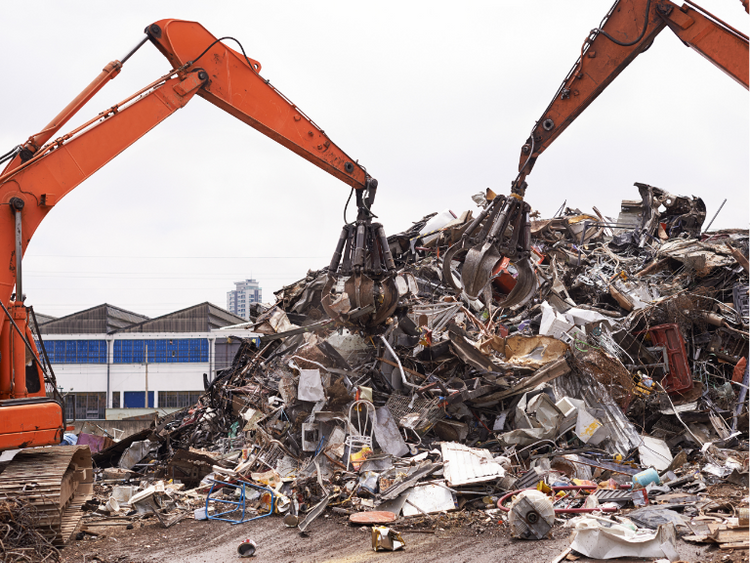Scrap Prices North America

Steel Mills September Scrap Buy Surprises Dealers
Written by John Packard
September 7, 2017
Ferrous scrap prices were expected to rise by $20 to $30 per gross ton once the September negotiations began. By Thursday afternoon (today), we were learning that steel mills are suddenly able to buy at sideways numbers. We understand North Star BlueScope was able to buy September at the same prices as August. Other sources are advising that the upside potential is now $10-$15 rather than $20-$30.
Steel Market Update (SMU) is in contact with a number of ferrous scrap sources and we are being advised that the market is still in flux, and those anticipating higher prices than those collected in August may be disappointed.
One of our steel mills sources, when asked about the AK Steel price increase and their support of the increase, told us that “scrap is losing steam” and may end up moving against a new mill price increase.
From the East Coast, one of our scrap sources told us this morning, “Nothing’s happening yet, but the market is not as strong as people initially thought. Notwithstanding the DRI plant outage, HBI disruption, hurricanes, and a continued strong export market (new deals are basically sideways or thereabouts from prior deals), there are also a lot of U.S. mill outages in September and more obsolete scrap is available than was initially projected. I still expect the market to trade higher, and regionally it will be stronger in the East and Southeast than in the Midwest and Ohio Valley, but at this point I cannot put a number on it.”
John Harris of Aaristic told us this morning, “Looks like many will go sideways in many areas with max up of $10 for all the reasons I previously mentioned [see Tuesday issue of SMU]. There is a major holdout by mills pushing for sideways pricing. Not expected to settle quickly, especially with the advent of the new storm coming.”
Mike Marley, scrap guru for World Steel Dynamics, reported earlier today, “Still nothing firm from the mills in Detroit or Chicago. A decision is expected after lunch today. Only buys thus far have been by a few small mills in the East. Gerdau’s rebar mill in Sayreville, N.J., is up $15 per ton on HMS and P&S. That puts Gerdau’s HMS price delivered to that mill at $310 per ton and P&S at $320 per ton. But that’s always a moving target because he (the mill’s buyer) has to compete with the exporters (Sims and EMR) for HMS. He could be paying more by tomorrow or Monday.
”Standard Steel in central PA is up $15 per ton on shredded scrap to $330, but that mill only buys a few thousand tons each month. ArcelorMittal’s mills in PA will buy and supposedly will pay higher prices, but buyer at Steelton is holding up late shipments by truck. That mill doesn’t have much storage space for scrap on site, so it never cancels late deliveries. It must schedule shipments from dealers.”
Marley continued: “Exporters are trying to buy heavy melt at $300+, but aren’t having much success because dealers on the coast and inland are waiting to see what the domestic mills will do. If exporters raise their prices, domestic mills might go higher. Also, the exporters are still short scrap from the orders they took last month and haven’t shipped some cargoes yet. Turks have bought a few cargoes in Europe this week, but nothing from the U.S. I think the Turks want to buy from the U.S., but the exporters haven’t made any offers. They don’t know what they will have to pay to get scrap.”
By this afternoon, SMU was hearing that the Detroit mills also bought at sideways pricing, and those who purchased on a “price to be determined” basis will most likely receive September scrap at the same numbers as August.
Marley provided some insights as to why the numbers are unchanged: “Some of these mills supposedly cut the volume of scrap they bought this month. That could result from one or several factors. First, they have enough scrap because of late-arriving shipments as a result of the rail car shortages on the CSX and NS lines. Second, order books could be weakening. Third, dealers are scared because of the absence of new export sales to Turkey. Or, lastly, some of these mills may have bought only a portion of their needs and may be back in the market making quiet deals later this month.”
The impact of Hurricane Harvey and the new Hurricane Irma, which is closing in on Florida and the Southeast, has yet to be determined. There are going to be issues with barges and deliveries of scrap coming out of the Houston area. However, over time, there will be a large amount of new scrap generated by the cars that will need to be scrapped, appliances and other metal items that will make their way to the scrap yards. We think that material will not be a factor until October and beyond.
Steel Market Update will continue to monitor scrap negotiations and will report as information becomes available.

John Packard
Read more from John PackardLatest in Scrap Prices North America

HRC vs. prime scrap spread widens in June
The price spread between HRC and prime scrap widened in June.

Ferrous scrap pricing sideways in June
Ferrous scrap prices in the US have remained stable from May to June.

HRC vs. scrap spread widens over $150/ton in March
The HRC vs. prime scrap spread increased again in March.

HRC vs. prime scrap spread increases in February
The price spread between hot-rolled coil (HRC) and prime scrap widened in February ahead of the implementation of President Trump’s tariffs on steel.
HRC vs. prime scrap spread narrows again in January
The price spread between hot-rolled coil (HRC) and prime scrap continued to narrow in January, according to SMU’s most recent pricing data. While SMU’s average HRC price edged down week over week (w/w), it rose compared to a month ago. The January price for busheling also increased from December. Our average HRC price as of […]
